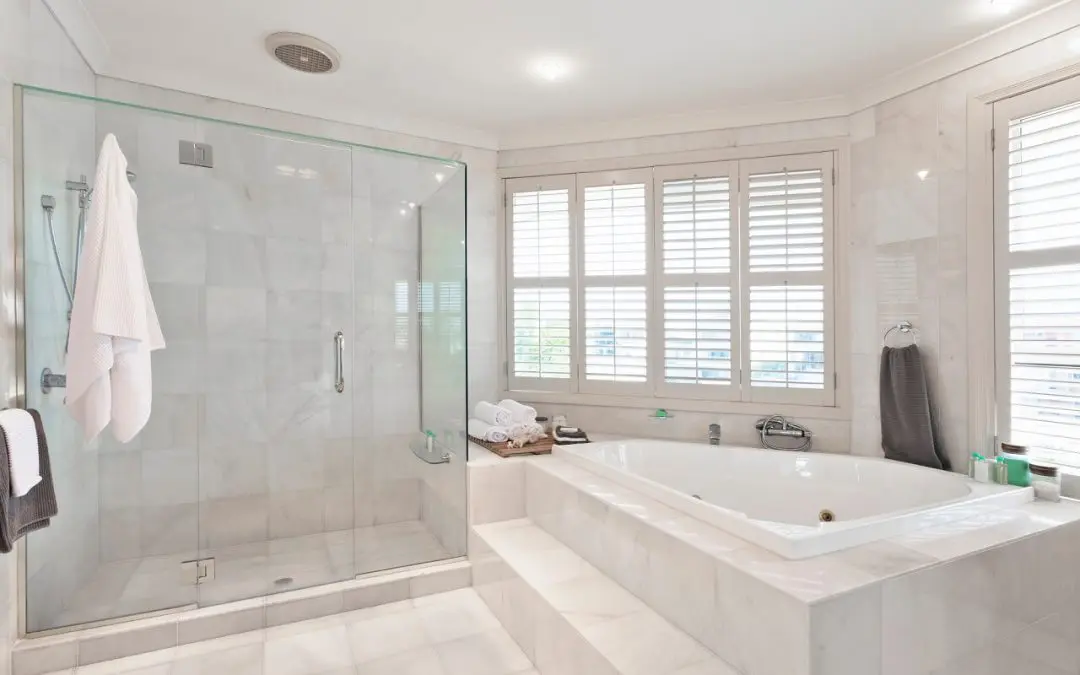When designing or renovating a bathroom, homeowners often focus on aesthetic elements like tile selection, fixtures, and lighting. However, one aspect that you may overlook is ventilation. Let’s explore the importance of bathroom ventilation and why it’s necessary for a healthy and functional bathroom.
6 Reasons Bathroom Ventilation Is Essential
Prevent Mold and Mildew Growth
Adequate ventilation is vital to prevent the growth of mold and mildew in your bathroom. Mold thrives in warm, moist environments, making bathrooms with poor ventilation susceptible to mold infestations. Mold and mildew are unsightly and can cause respiratory issues, exacerbating allergies and asthma symptoms.
Bathroom Ventilation Reduces Humidity Levels
Bathrooms experience high humidity due to showering, bathing, and handwashing. Excess moisture accumulates without proper ventilation, leading to condensation on surfaces like walls, ceilings, and mirrors. Over time, this damages paint, wallpaper, and wood surfaces and promotes mold and mildew. A well-ventilated bathroom reduces humidity and offers a comfortable and healthy environment.
Prevent Structural Damage
Excess moisture in the bathroom may lead to structural damage over time. Persistent humidity can weaken drywall, cause paint to peel, and warp wood surfaces. In extreme cases, prolonged exposure to moisture compromises the structural integrity of your home, leading to costly repairs. Proper ventilation protects your home from damage by removing moisture.
Eliminate Odors with Proper Bathroom Ventilation
Ventilation plays a role in eliminating odors from the bathroom. Whether from damp towels, scented body care products, or cleaning chemicals, smells can linger in the air and create an unpleasant atmosphere. Adequate bathroom ventilation removes odors quickly, keeping the space fresh and inviting for you and your guests.
Improve Indoor Air Quality
Poor indoor air quality can impact your health and well-being. Stagnant air leads to the accumulation of pollutants, allergens, and volatile organic compounds (VOCs) in the air, causing respiratory issues, headaches, and other health problems. Proper ventilation expels these contaminants from the bathroom, improving indoor air quality and creating a healthier living environment for you and your family.
Enhance Comfort and Functionality
In addition to maintaining a healthy environment, good ventilation enhances your bathroom’s comfort and functionality. Ventilation fans remove moisture from the air, reducing the likelihood of slippery floors and foggy mirrors. You’ll create a more comfortable and enjoyable space and extend the lifespan of fixtures and finishes in the bathroom.
Adequate ventilation is essential for a healthy, functional, comfortable bathroom environment. Investing in a quality ventilation system helps to prevent mold and mildew growth, reduce humidity levels, protect against structural damage, eliminate odors, improve indoor air quality, and enhance overall comfort and functionality. Don’t overlook the importance of ventilation in your bathroom – it’s an investment that pays off in the long term.
FAQs
What is the difference between mold and mildew, and is one more dangerous than the other?
Mold and mildew are fungi that thrive in moist environments, but they have some differences. Mold tends to be green or black and can penetrate surfaces, causing structural damage and health issues. Mildew is typically white or gray and grows on the surface of materials like shower curtains and tile grout. While both can cause respiratory problems and allergies, some types of mold pose more serious health risks than mildew.
In addition to boosting ventilation, what other steps can I take to reduce humidity in the bathroom?
To reduce humidity in the bathroom:
- Use a dehumidifier to remove excess moisture from the air.
- Install a timer or humidity sensor on your ventilation fan to ensure it runs after showering or bathing.
- Wipe surfaces like walls, ceilings, and countertops after showering to remove excess moisture.
- Keep bathroom doors and windows open when possible to allow for air circulation.
Are there houseplants that will help lower humidity in the bathroom?
Yes, certain houseplants help lower humidity levels by absorbing excess moisture from the air. Examples include spider plants, peace lilies, bamboo palms, and Boston ferns. Choose plants that thrive in high-humidity environments and provide adequate drainage to prevent overwatering.
What flooring materials are best in spaces with moisture and high humidity?
Flooring materials that are best suited for spaces with moisture and high humidity include:
- Porcelain or ceramic tile: These materials are water-resistant, durable, and easy to clean, making them ideal for bathrooms.
- Luxury vinyl flooring: Waterproof and low-maintenance, luxury vinyl flooring is an excellent option and can mimic the look of natural materials like wood or stone.
- Natural stone: While more porous than porcelain or ceramic tile, certain types of natural stone, like slate or granite, are sealed to resist moisture and make them suitable for bathroom floors.
Are there moisture-resistant building materials for the bathroom?
Yes, several moisture-resistant building materials are designed specifically for use in bathrooms. When planning a renovation, shop for moisture-resistant drywall, cement board, and waterproof membranes for shower enclosures and tub surrounds. These materials prevent water damage and mold growth, ensuring the longevity of your bathroom’s structure and finishes.
Legacy Property Inspections offers comprehensive home inspections in Southeast Georgia. Contact us to request an appointment for our services.

